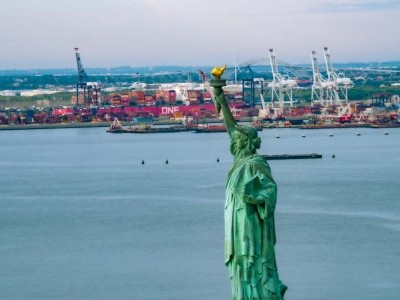Facing hurricanes with FirstNet on your side
Jul 23, 2020As the summer months heat up, so too does hurricane season. With the U.S. Department of Commerce’s National Oceanic and Atmospheric Administration (NOAA) forecasting an above-normal Atlantic hurricane season for 2020, first responders must be prepared. FirstNet, the only nationwide, purpose-built network for public safety, has been battle tested and designed to keep first responders connected during large storms and hurricanes.

FirstNet in Emergency Operations Centers
In southern Florida, hurricanes are not uncommon, and public safety agencies in the area must be prepared for any storm. Today, many agencies are using FirstNet to enhance operations during hurricane response. This includes the Miami-Dade County Emergency Operations Center (EOC), which is activated during natural and man-made disasters. The EOC acts as a centralized information hub for agencies responding to the incident, which can range from public works to the Department of Health to traditional public safety agencies. The EOC uses FirstNet to ensure the necessary information reaches the appropriate officials.
As Miami-area first responders conduct damage assessments from storms and hurricanes, they use online reporting systems that are powered by FirstNet-enabled tablets and laptops. This data is quickly and securely relayed from the field back to the EOC, where it is easily accessible by decision makers during emergencies and other incidents. As Miami-Dade Fire Rescue Communications Chief Greg Rubin explains, “The elected officials – the mayor and the emergency manager – look at that information to determine where the greatest effect of a hurricane has been on the county, and where resources need to be deployed.”
Deployables offer on-demand connectivity
Disasters like hurricanes can damage critical infrastructure, limiting first responders’ communication capabilities. For FirstNet users, there is a fleet of dedicated deployable assets that can help with coverage and connectivity during these situations. The deployables include 72 mobile cell sites, three aerial cells on wings (Flying COWs), and an aerostat or blimp. They provide first responders with on-demand access to the network during response and recovery efforts.
Public safety agencies have used these resources in several hurricanes in recent years, such as Hurricane Florence in North Carolina and Hurricane Michael in Florida. For Dave Merrick, Director of Emergency Management at Florida State University, deployable assets were critical in allowing first responders to communicate during disaster assessment after Hurricane Michael. “The only thing that worked for us on Mexico Beach post-Michael was the FirstNet COWs that came in,” he said. “Those were the first communications we had that were at all functional on Mexico Beach.”
Similar Stories

Strike updates on Canada’s West Coast and Port of Montreal
View ArticlePorts awarded more than half a billion in MARAD PIDP Grants
The $580 million in grants awarded today range in size from more than $53 million for the Port of San Juan Puerto Rico to restore key wharves to $708,750 for…
View Article
Port of Hamburg: Sustained growth in hinterland transports
View Article
Port of Hueneme and Port of Paita sign MoU to establish a sister port relationship
View Article
New electric yard truck helps Port of Tacoma demonstrate zero-emission technology
View Article
Port Authority of NYNJ proposes $9.4 billion budget for 2025
View ArticleGet the most up-to-date trending news!
SubscribeIndustry updates and weekly newsletter direct to your inbox!





